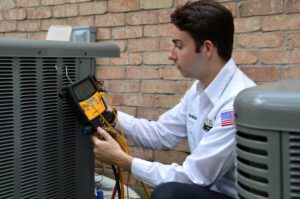As HVAC technician, you’ll be involved in a variety of tasks. From assembling tools and equipment to crawling into tight spaces, your job will take you to all sorts of places. You might even have to climb ladders and climb rooftops. You’ll need to be physically fit to keep up with your job since HVAC work often requires you to work in cramped spaces.

The design and operation of a pharmaceutical facility’s HVAC systems can significantly impact the safety and effectiveness of the space. The ISPE Good Practice Guide provides project teams and designers with guidelines for effective HVAC systems that meet pharmaceutical facility objectives and goals. The guidelines focus on functional design, energy efficiency, and low life-cycle costs.
HVAC systems use various technologies to control indoor air quality, provide acceptable thermal comfort, and maintain the proper humidity level. The field of HVAC design is a sub-discipline of mechanical engineering that relies on principles of fluid mechanics, thermodynamics, and heat transfer. The term HVAC may be used to refer to either heating or cooling, or both.
The HVAC program combines hands-on learning with industry experience and certified instructors. Students earn several national certificates that they can add to their resumes. During the program, students work with an Advisory Board of HVAC contractors and businesses. The goal is to provide students with as much practical experience as possible.
HVAC engineers are typically members of the ASHRAE and maybe EPA or locally certified. ASHRAE is an international technical society organized into regional chapters and student branches. Members have many opportunities to share ideas and expertise.
There are different types of ductwork used for heating and cooling purposes. Most ductwork is made of metal, but some are made of fiberglass. Fiberglass ductwork is more flexible than metal, so it is commonly used between floor joists and along the ceiling. However, fiberglass ductwork is not as durable as metal, and there are health concerns associated with its use. Even a small leak in ductwork can reduce its efficiency by up to 46%.
In order to maintain a comfortable temperature, HVAC systems must be able to deliver the right amount of air throughout the entire home. Without proper ductwork, heating and cooling systems will not function properly, resulting in higher energy bills. A good system will also have cleaner air as it eliminates airborne contaminants. Regardless of the type of HVAC system, the importance of proper ductwork cannot be overstated.
Flexible ducts are a popular choice because they can be installed in tight spaces. They are also cheaper and easier to install than rigid ducts. The main disadvantage of flexible ductwork is that it can be punctured or kinked, which can impair the HVAC system’s performance.
If you suspect your HVAC system might have a leak, make sure to have, it inspected. An inspection will determine whether or not it is fit to use and if any other work needs to be done before it can begin.
The market for HVAC controls is expected to grow at a high CAGR during the forecast period. The market is primarily driven by high disposable incomes, rapid urbanization, and government investments in smart technologies and infrastructure development. The market is expected to grow rapidly because of the growing population and focus on human welfare development.
There are various types of HVAC controls available on the market, including microprocessor-based controls, panel-mounted controls, and wireless controls. Panel-mounted controls are suitable for buildings of less than a million square feet. They are easy to install and inexpensive. Larger buildings typically use central plant systems or building automation systems.
Controls for HVAC are becoming an essential part of commercial infrastructure, as these systems are vital to maintaining comfortable indoor temperatures and ventilation for office workers. With energy costs rising, companies are increasingly installing energy-efficient HVAC systems in their offices. In addition, the government is increasingly supporting this trend. Various APAC countries have introduced energy-efficient regulations to reduce energy costs.
HVAC controls can be used in industrial, commercial, and residential applications. They can manage temperature ranges, voltages, and alarm requirements. They are suitable for industries ranging from energy production plants to processing facilities. Some of the common types of HVAC controls are thermostats, speed controls, and environmental e-VENT(TM) controls. These systems can also control lighting, mechanical shutters, and misting systems.